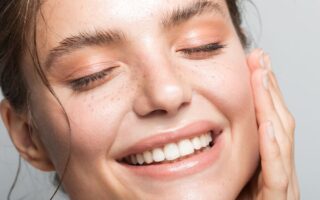Fruit acids (alpha-hydroxy acids / AHA) such as glycolic acid, malic acid, or citric acid are obtained from (unripe) fruits, among other things. They are mainly used as peelings in the treatment of acne. These chemical peels penetrate deep into the skin, removing dead horny cells (keratolysis) and thus stimulating skin renewal.
Since collagen formation and cell division are promoted this way, the epidermis (upper skin) can absorb more moisture, and fruit acid peeling acts as a moisture booster for the skin. When using acne fruit acid peelings, a distinction is made between home use and medical fruit acid treatments.
Small doses of peelings (max. 10%) are available over the counter in many drugstores and pharmacies. While beauticians can use up to 40% peelings, dermatologists can use a concentration of up to 70%. For the high-dose fruit acid treatment, in many cases, the skin must be prepared with a special AHA cream two weeks before the treatment to get used to the active ingredient early.
The detachment of the corneal cells usually occurs within two days after the treatment. Since professional fruit acid peeling often consists of several sessions, the application is repeated after 5 to 14 days, depending on the dosage. Side effects are generally rare, but slight reddening of the skin and scaling can occur in the first few days after the peeling. During the treatment, many patients feel a burning sensation on the skin. Fruit acid peelings are also often used in the aftercare of acne scars.
What is the difference between glycolic acid and lactic acid?
Lactic acid is much milder than glycolic acid. It has a slightly anti-inflammatory effect, increases the level of ceramides, and helps to regulate the pH value of the skin. Lactic acid also has a similar effect to a moisture booster and is, therefore, often used against blemishes on dry or sensitive skin.
Vitamin A acids: Retinoids as an effective remedy against (severe) acne
When people talk about vitamin A acid treating acne, they usually refer to retinoids. These vitamin A derivatives are among the most effective acne medications because they combine a range of mechanisms of action. Vitamin A acids in the form of tretinoin, adapalene, and isotretinoin have the following effects on the skin in acne:
- Inhibition of inflammation (anti-inflammatory effect)
- Dissolution of blackheads (comedolytic effect)
- Opening of the anti-comedogenic development)
- Combating keratinization disorders (keratolytic effect)
- Reduction and prevention of wrinkles by stimulating the regeneration of skin cells (keratinocytes).
Retinoids can be applied equally as vitamin A acid cream/gel or tablet form. Tretinoin and adapalene are mainly used externally (topically) and combined with benzoyl peroxide (BPO). They are often the most effective method when a considerable number of blackheads appear in the case of mild acne (acne comedogenic). Vitamin A acid should not be used during pregnancy or breastfeeding.
Severe acne is often treated internally (systemically) with vitamin A acid tablets (isotretinoin). They are particularly effective by, among other things, reducing the size of the sebaceous glands, reducing sebum production, and eliminating keratinization disorders.
At the same time, they counteract inflammatory reactions and the colonization of bacteria. The problem: isotretinoin can be associated with strong interactions and side effects, which is why, among other things, no simultaneous treatment with tetracyclines (antibiotics) is approved. A detailed consultation with a dermatologist is always carried out before treatment with isotretinoin.

